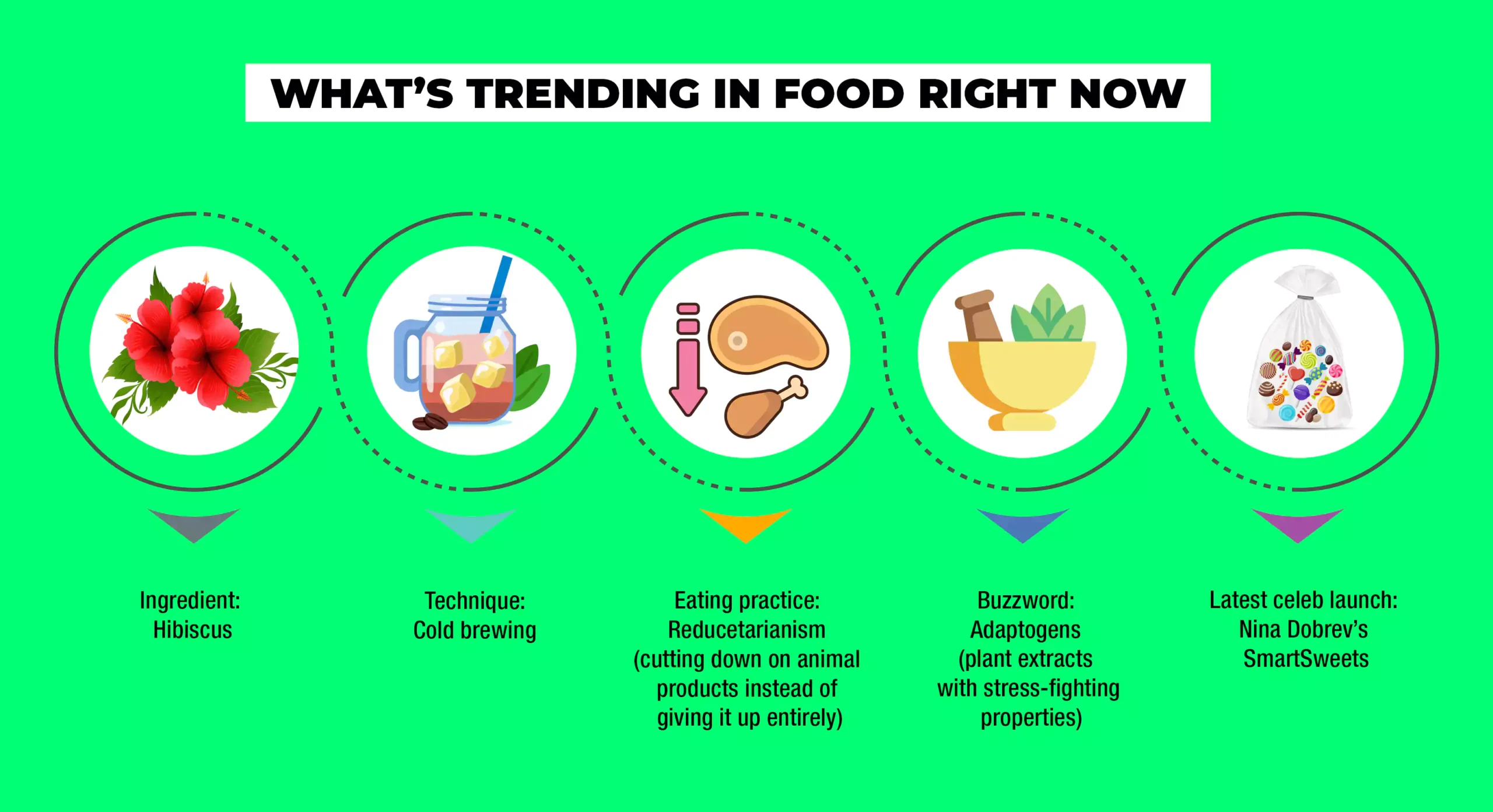
It seems like only yesterday I was looking up sourdough bread because it wasn’t popular in my neighbourhood. And then, almost overnight, everyone was making it in their homes like it was an essential skill. People were fermenting away, salting eggs, washing cabbage to make kimchi, and talking about gut health and probiotics. Meanwhile, the coffee fanatics in the house were bustling around the kitchen, whipping up frothy cups of bitter coffee. Then the lockdowns ended, and we were planning a baby shower. Someone suggested cake pops, and everyone immediately dismissed it as an old fogey. Why, you ask? Because cake popsicles were the only way to go. And if you didn’t receive that memo, you were on the outside looking in. This begs the question: why are certain foods considered trendy and others looked down upon as yesterday’s news? The answer, it turns out, is that there is more than one factor at play. Let’s take them one by one.
Marketing a food trend into motion
Guerilla marketing—an ad strategy that promotes an unconventional idea as the next big thing. Want an example? Take kale—back in 2014, American supermarkets found it challenging to move this vegetable. So entrepreneur Oberon Sinclair set out to popularise the leafy green, and she did so to great success. She used guerrilla marketing to highlight the benefits of this vegetable across popular restaurants. The kale storm just took off from there, becoming popular among vegans, celebrities, and influencers. After Bon Appetit magazine, Gwyneth Paltrow, and Ellen Degeneres promoted kale chips, it was only a matter of time before National Kale Day came to be. This marketing strategy is also the reason everyone has avocado on their toast and OJ in the morning.
Food companies intent on marketing their products as exotic rarities often choose to sell foods readily available in Eastern supermarkets. They sell them for triple their price with fancy packaging. I like to watch Sortedfood’s “Pretentious Ingredients” segments to check out some of these products. Online cooking videos can also raise the market value of certain products, which is probably why Oreos and Nutella are everywhere. This prevalence has much to do with social media marketing and narrative advertising.
A star’s touch
A celebrity’s “What I Eat in a Day” video will involve foods you’ve only remotely heard of or seen in passing in the supermarket’s imported section. The influencer will talk about the health benefits of goji berries, acai berries, yuzus, or moringa. Soon, you’ll find yourselves associating these exotic miracle foods (aka superfoods) with their beauty. Meanwhile, those non-Westerners who have always been familiar with these foods might find their incredible magical properties a bit exaggerated (as was the case with me and moringa).
Celebrities are also the driving force behind the gluten-free and dairy-free trends. However, adopting these trends sometimes goes beyond wanting to look like your favourite actor or model. Plant-based diets (such as vegetarian, vegan, ovo-vegetarian, lacto-vegetarian, pescatarian, and flexitarian) are the way to go for your well-being, the environment’s health, and animal welfare. In addition, plant-based substitutes for meat are now making appearances all over the market. Though the Ron Swanson in me continues to reject such a preposterous proposition, it seems that this trend will only see even more tremendous growth in times to come.

The ‘wokeness’ of food trends
I know this makes me sound really old, but here I go anyway: I only knew one kind of milk growing up. The type of milk that comes from an animal, like a cow or a human. Even goat’s and camel’s milk sounded unfamiliar back then. So, I still find it absurd that we’ve chosen to call nut juice or oat starch ‘milk’. The next big milk (incredible as it may sound) is potato milk. Every now and again, a new type of milk emerges. And a while later, a research update springs up to say that’s not good for you and that you should switch to another milk. In any case, drinking cow’s milk is primarily considered ignorant and insensitive to the environment right now.
Another food that has joined the cancelled list is sugar. It seems like sugar in all its forms is being cast as the villain. Moreover, social media abounds with a lot of misinformation about how sugar works and how harmful it is. You’ll find that most celebrity smoothie recipes call for alternative sweeteners, which could be even more damaging. Studies link artificial sweeteners to obesity, diabetes, and depression (ironically, which they’re meant to prevent). As true as these reasons may be, it seems like we can find something to be offended or judgmental about in just about anything.
Let’s take it further and talk about food appropriation where a culture is not given its due in the representation of its food. It is common for someone to take a dish, strip it of its authenticity and, sometimes, even deliciousness to turn it into something that appeals to Western tastebuds. As irritating as that is, it’s not a whole cultural thing. Food has continuously been appropriated, changed, and evolved; its roots are not so easily traceable. The last thing we should be divisive about is food.
Food trends to live by
Food trends emerge for reasons as varied as marketing strategies and ecological concerns. Some have already died down (rainbow-coloured everything, cronuts, zoodles, bulletproof coffee), but some trends are here for the long haul or, at least, they should be:
Seasonal fruit: Rather than buying imported fruit or the same kind of fruit all year long because it’s the latest superfood, choose seasonal fruit instead. Not only does it encourage sustainable farming practices, but it also tastes delicious and is affordable.
Home-grown: The best way to know what you’re putting into your body is to grow it yourself. Gardening can also be a very relaxing and rewarding hobby. With urban farming on the rise, folks are taking to their rooftops to grow herbs and other garden-variety plants; some have even built chicken coops.
Fusion food: Being not such a purist about one’s food can pave the way for creative amalgamations that are a joy to the tastebuds. Who doesn’t love some Tex-Mex or Indo-Chinese? More of that, please.
Do you have food trends that you’ve grown to love? Or detest? Which underappreciated food would you love to see trending? We’d love to know.



